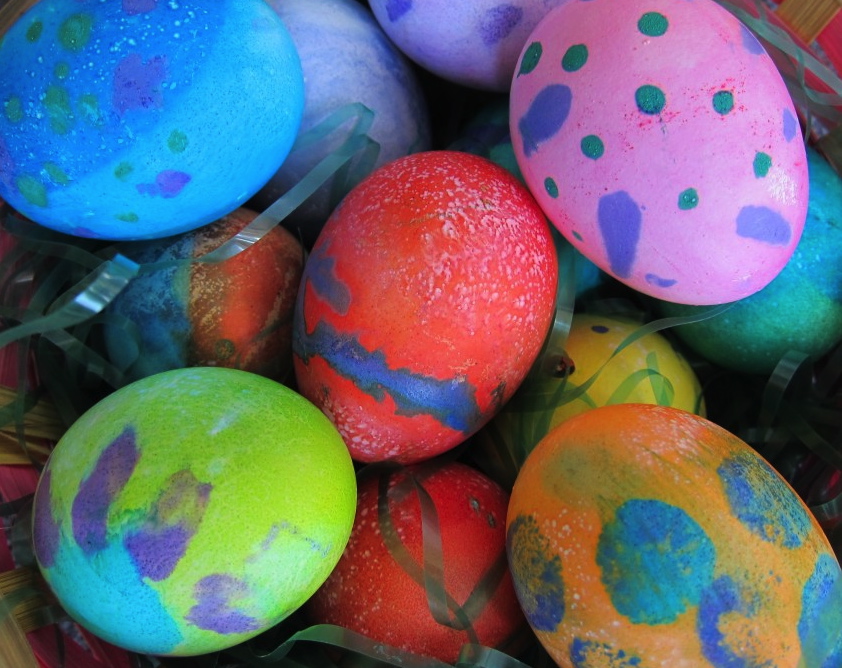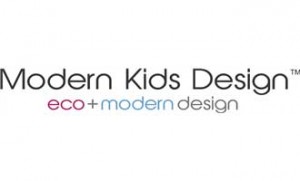
The Eco-Friendly Bunny: 8 Tips For A Green Easter
Every holiday, Modern Kids Design tries to think about different ways to make our traditions more eco-friendly. By incorporating earth-friendly behaviors, we hope to teach our kids about the importance of conservation and protecting the planet. We know the best way to do this is to lead by example and to get the kids involved. Holidays add a bit of magic to our lives and help us make memorable moments. Focusing on creating a green Easter tradition can help make being eco-friendly more magical.
Beautiful Colored Eggs From Natural Dyes
You can easily dye eggs with foods you may already have in your kitchen! Color will vary depending on whether you use white or brown eggs and how long you let the eggs sit in the dye.
If you’re dyeing a dozen eggs, you’ll want to make 4 cups total dye. Remember, you’ll lose some liquid as it boils, so make extra. Choose your colors and get cooking!
Blue: chopped purple cabbage, 1 cup per cup of water
Lavender or red (varies): red onion skins, 1 cup per cup of water
Orange: yellow onion skins, 1 cup per cup of water
Pink: shredded beets, 1 cup per cup of water
Yellow: 2 tablespoons ground turmeric per cup of water
Lavender: 1 bag Red Zinger tea per cup of water
You’ll also want to have some distilled vinegar and vegetable oil on hand.
Place your chosen food in the water and let it come to a boil. Once it does, cover and let simmer for 15 to 30 minutes, depending on the color you want.
The color of the water should be a few shades darker than the color you want your eggs to be. The best way to check the color is to drip some dye onto a white dish.
Once you’ve achieved your color, turn off the heat and let your dye come to room temperature. Strain your dye and add one tablespoon of distilled vinegar per cup of dye.
Place your cooked eggs in a dish and cover with the dye. Place the dish in the refrigerator until the eggs are your desired shade.
Discard leftover dye. Dry your eggs and rub them with a dab of vegetable oil to make them shine.
You’ll want to store your beautiful eggs in the fridge until it’s time to hide them or eat them.
Make Your Own Eggs
If you prefer to not use real eggs, consider making your own! Not Martha has some adorable papier mache eggs that she fills with candy. These can even be used for decoration if you can’t imagine them being torn apart!
Reusable Eggs
Rather than using real eggs for dyeing and egg hunts, consider painting wooden or ceramic eggs. Not only will this help create a fun new tradition for your family, but you’ll have a new set of keepsakes, too.
Reusable Baskets
Sometimes Easter baskets are treated as disposable and tossed after the festivities. This year, why not use baskets that can also be used for toy storage or planting? Reusing is a great way to keep goods out of landfills. If you don’t have a use for a repurposed Easter basket, consider donating it to a local thrift store.
Grass
Plastic Easter grass doesn’t biodegrade and can take a toll on the environment. Rather than purchasing more plastic, consider making your own fake grass with tissue paper, magazines, or newspapers. If you already have plastic grass, save it to use next year! Yeah, we know, the grass in our picture (from last Easter) is plastic…but we reused it! 🙂 Honestly, like you, as busy parents, all we can do is the best we can at the time. And we never judge. 🙂
Organic Treats
Easter candy has diversified since the days of hollow milk chocolate bunnies and sugary jelly beans. Organic and fair-trade candy makers have begun creating sweets just for the season. Be on the lookout at your local store for organic Easter candy and chocolates—or skip the edible treats in favor of activity-based treats.
Activities and Toys
If you’re planning on creating a basket of goodies, consider incorporating some activities or toys instead of more sweet treats. Art supplies are a wonderful addition to an Easter basket and they’ll provide hours of enjoyment. Natural crayons and paints, eco-friendly modeling dough, and non-toxic chalk are great for rainy or sunny spring days alike. Add a jump rope or a soccer ball to get your kids on the move!
Another fun activity? Includes seeds for planting or a small seedling in your child’s Easter Basket and make a new tradition. Wangari Maathai, the Kenyan Nobel Peace Prize winner and founder of the Green Belt Movement, would encourage families to plant an Easter tree to symbolize the renewal and hope that spring embodies. She had awesome ideas and that is one of many that we like.
Easter Meal
An Easter meal that is prepared using as many local, organic foods as possible is a treat for the tastebuds! Also, consider bringing those dyed eggs into the mix so they don’t go to waste!
We hope you and your family have a great Easter, full of lots of springtime fun. Let us know if you green your Easter with any of these tips or if you have your own! We’d love to hear from you at healthyliving@modernkidsdesign.com.




